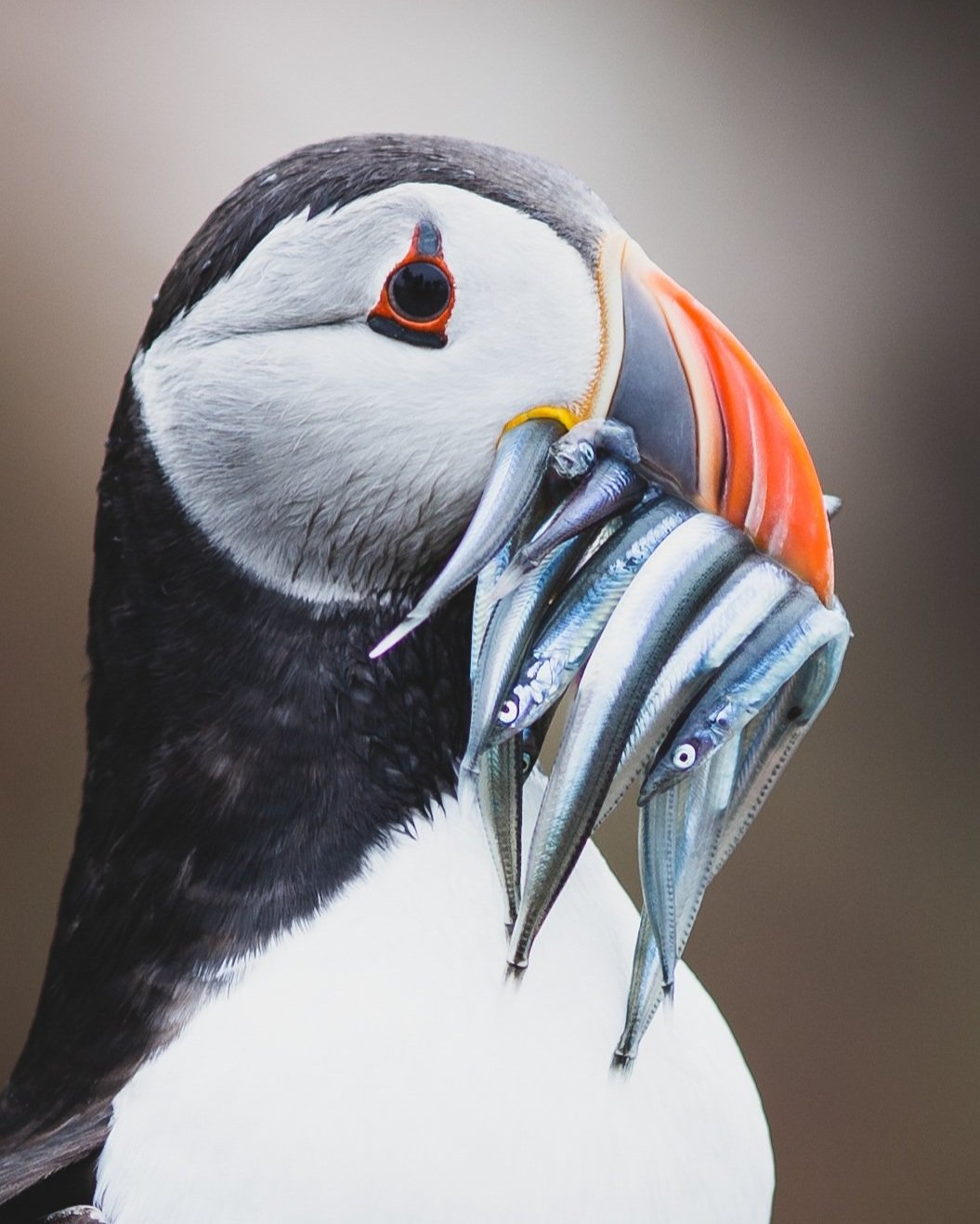Return of the Puffins
After a long winter out at sea, Atlantic Puffins have now returned to the Farne Islands. From now through until the end of July, approximately 45,000 pairs of puffin will descend on the rocky archipelago to breed and raise pufflings. Find out more about the lives of this remarkable seabird species.
The Farne Islands offer a haven for a wide variety of avian species. Among these feathered inhabitants, the charismatic Atlantic Puffins seldom fail to steal the show with their vibrant beaks, distinctive appearance, and captivating behaviors. Unbeknown to some, puffins stand at just 10 inches tall and weigh approximately one pound. They are instantly recognisable, sporting black and white feathers and large brightly coloured beaks, which transition from grey to vibrant orange during the breeding season. These colourful beaks play a vital role in attracting mates and differentiating between individuals.
Northumberland’s Farne Islands serve as a vital breeding ground for puffins and the birds typically return in early spring. They form large colonies on the islands, nesting in burrows dug into the grassy cliff edges or using crevices among the rocks. Puffins are monogamous and will return to the same partner and nest site year after year, reinforcing their special bond.
While puffins appear somewhat clumsy on land, they are highly skilled in the air and water. Their short wings are adapted for diving and can plunge into the sea from heights of up to 200 feet. Underwater, their wings transform into efficient flippers, allowing them to ‘fly’ through the water with remarkable agility. Puffins can remain submerged for up to one minute, using their wings to propel themselves in search of small fish, such as sand eels, which make up the majority of their diet.
These birds have specialised beaks that enable them to grasp multiple small fish at once. Incredibly, they can hold up to a dozen fish crosswise in their beaks, securing them with spiny projections on their tongues. This clever adaptation allows puffins to transport a significant amount of food back to their chicks, minimising the number of trips required during the feeding process.
While the puffin population on the Farne Islands remains relatively stable, these birds face tough challenges in other parts of the world. Climate change, overfishing, pollution, and habitat loss and Bird Flu pose significant threats to puffin colonies globally. As a result they are listed as ‘vulnerable’ on the global IUCN Red List of Threatened Species.
In Northumberland, puffins have earned a reputation for their charming and charismatic personalities. With their comical expressions, waddling gait, and vibrant beaks, they captivate the hearts of visitors to the Farne Islands.
Now is the best time of year to see puffins in Northumberland, with boats departing daily from Seahouses harbour.
Photography by @adventure_cal
Did you know?
In Northumberland, Puffins are known locally as ‘Tommy Noddys’.
The name is thought to have derived from the distinctive head action that puffins display when they walk!






